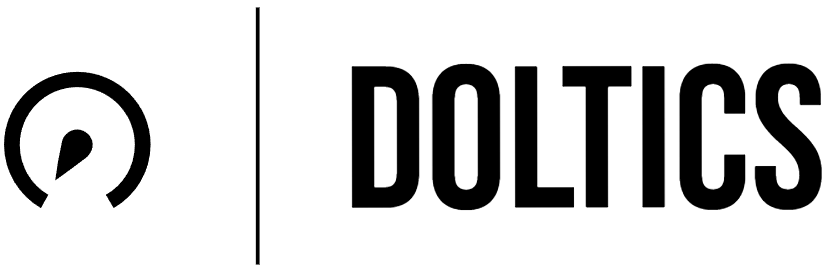Image Optimization

“A picture is worth a thousand words”, Image optimization is a process to compress website images without losing their quality. This means delivering the best quality images in the right dimension, format while keeping the lowest image size.
Users love sites which load in less than 2 seconds. If the page takes more than 3 seconds to load, almost 40% of visitors tend to leave that site, thus increasing the bounce rate.
Optimizing web images is a process of delivering high-quality images in the right format, dimension, size, and resolution while keeping the smallest possible size.
This can be done in different ways, be it by resizing the images, caching, or by compressing the size.
What Is Image SEO Optimization?
There are two key goals of image SEO:
- To make your images more discoverable
- Ensure that images don’t slow down page speed

Image search engine optimization and image optimization are separate, but related. Reducing image file size does help optimize images for search by reducing load times, and Google encourages developers to compress images when possible.
However, for an image to be truly optimized for search, developers should:
- Give the image file a relevant, readable name, and include a relevant keyword if possible
- Include a brief, descriptive image alt tag that is helpful for site visitors using screen readers and contains one or more keywords
- Make images responsive and mobile-friendly
- Caption images where doing so enhances the user experience and keeps users engaged
- Include Open Graph and Twitter card images for social sharing.
Why do we optimize images?

Images are the largest contributor to overall page size, which makes pages slower to load. Data from HTTP Archive reveals that unoptimized images make up 75% of a total webpage’s weight, on average. This can have a negative impact on your website performance.
Benefits of Image Optimization
- Improves Page Load Speed
Around 64% of a website’s weight is composed of images. If we are able to reduce the size of these images without reducing the image quality, then it will have a direct and positive impact on page load speeds and user-experience of visitors on your websites. Website page speed depends on many factors like website layout, design, images, etc. Around 65% of website weight consists of images so if you can optimize all website images well, then you will definitely see a big change in your website loading speed.
Image optimization for web and mobile exists to make web pages load faster. They create a better browsing experience for shoppers. Should there be a mere two-second delay in your page speed, your bounce rate can increase by 104%
- Boost Conversions
As we have already discussed, image optimizations help in getting a higher rank in search results. it directly means that your website can capture more users and you can possibly get more conversions.
A 1-second delay in page load time can decrease customer satisfaction by 16%. And 40% of users abandon a website if it takes more than 3 seconds to load. This is why Image optimization is very important, especially in e-commerce websites.
- Better browsing experience
Visitor loves a website that loads in under 2 seconds. So if you can successfully optimize all your website images and have taken care of other things too, then you can provide them with a better overall user experience.
Pages with a longer load time tend to have higher bounce rates and lower average time on page. Reducing page load times by even one second will improve your user’s experience. Improved user experience and interactions with your site have a positive impact on search engine rankings, which can improve engagement, conversions, and customer retention.
- Helps in boosting website SEO ranking
Who doesn’t want to see his website on top of the search rankings? Image optimization can be a powerful weapon for this. A search engine seo-optimization like Google loves the website which takes less time to load. Google will rank these websites higher in their search results.
- Improved search performance
Optimized images help both readers and search engines understand your website better and get your content seen online. Recent data shows that images are returned for 32% search on Google. Image optimization can help rank your images in Google’s Image Search, which can bring more to your website and build your brand. What’s more, visual search is becoming more
How to Take Advantage of Image Optimization to Boost Your SEO
Well-optimized images give your website a better chance of appearing in search engine results. Using the appropriate combination of format, alt text, and titles can all contribute to enhanced SEO performance.
You don’t have to spend many hours formulating and executing complex SEO strategies to optimize images. Boosting your SEO performance through image optimization involves a few easy steps.
Let’s look at several factors of image SEO to focus on so that search engines can crawl, index, and rank your images more efficiently.
1. Write Proper Image File Names
Descriptive file names help you and search engines like Google quickly locate images. That’s because correctly named files provide context about the images, increasing their chances of ranking in the image search.
Depending on what kind of images you create or save, ensure to write the product name and include descriptive words such as its brand or color. Moreover, use dashes rather than underscores to name your files. For example, use white-shirt.jpeg instead of white_shirt.jpeg.
If you cater to an international audience and translate the site’s images, don’t forget to translate the file names as well.
When it comes to keywords, use a tool like Google Search Console to review your Search Analytics and the queries that include your products.
This will help you find what customers would type into a search engine if they were looking for the type of goods you offer. However, be careful not to overstuff it with keywords. Only use the ones that fit the context and naturally describe the image.
2. Write Alt Texts
Adding alt text is another technique to optimize your images and boost SEO. Essentially, alt text is a description of the image’s context and content. It’s what screen readers read and what will appear on the page if an image cannot be loaded.
In addition to accessibility and SEO improvements, adding them will also give you an advantage over competitors.
There are some practices to follow to write good alt texts:
- Be very specific. Ensure that your description is as specific as possible, including the image’s message, context, etc. However, note that you don’t have to describe images used for decorative purposes.
- Keep it brief. Try to keep your descriptions within 125 characters. Note that you don’t need to mention “image of,” “photo of”, or anything like that in your alt text as the HTML code has it covered.
- Use keywords. If possible, include a target keyword in the alt text. However, be careful not to overdo it.
3. Use Structured Data for Your Images
Another strategy is to leverage structured data or schema markup for your WordPress site. It offers clear information about your page to help search engines fully comprehend its purpose and context, improving the crawling and indexing processes. It is important for site owners to follow all the general structured data guidelines that Google has laid out. If you fail to implement these standards, you can be penalized with poor rankings, or your pages will be ineligible for rich results.
Apart from images, structured data can be used for a variety of purposes, including:
- Knowledge graph. When you search for a person or business, Google gathers information from different websites and sources to display more relevant and useful results. Add information about your website to Google’s Knowledge Graph through structured data.
- Rich results. If your website contains several items that correspond to a specific search query, Google can display richer preview results by showing product reviews, star ratings, or videos. Rich results are an excellent opportunity to attract more targeted users to your page.
- Accelerated Mobile Pages. The main purpose of Google’s AMP project is to improve user experience on mobile devices, such as providing fast-loading pages. Using structured data in AMP can lead your website to be featured on mobile searches as part of rich results and carousels.
4. Optimize the Page Title and Description
When ranking images, Google also considers components such as the page’s title, meta description, headers, and content.
Therefore, an optimized page title and description can help you rank in the image search. Conducting keyword research is a good place to start.
Tools like Ahrefs, Ubersuggest, and Semrush can help you identify the most relevant search queries, their search volume, and keyword difficulty.
Then, include the relevant keywords on your page title, meta description, and URL. Combined with other image optimization strategies, it’ll increase your site’s chances of ranking high on search results.
5. Place the Images Properly
Another important aspect of image optimization is where to place the images on the website. Adding images randomly can have a poor influence on the context and relevance of your page.
While it’s not uncommon to use images to break long texts, the image must be directly connected to the written content. Keep in mind that screen readers cannot access texts within the images, so make sure to provide relevant alt texts and include essential information in the image only.
Apart from improving accessibility, it also helps boost page visibility on Google image searches.
6. Optimize for Mobile Devices
Given that more than half of all web traffic comes from mobile devices, it is easy to see the importance of ensuring visitors can access all pages and images smoothly from all devices.
Google’s Mobile-Friendly Test Tool scans your website and evaluates whether it will look good on mobile screens. In addition, the tool will provide a report on the overall usability of your website.
For example, if the page only loads partially on a mobile device, it’ll inform which elements, including images, have issues and need to be fixed.
7. Use Copyright-Free and Good Image Quality
All images uploaded to your site must be copyright-free to prevent the risk of lawsuits, which would not only damage your online reputation but also the site’s rank on search results.
Shutterstock, Unsplash, and Getty Images are among the most prominent stock image providers. These websites contain thousands of free-licensed images for different purposes.
Alternatively, navigate to Google Images’ Advanced Search section and find images based on different Usage Rights.
As part of your image optimization workflow, consider creating unique images for the site. Especially if you run an eCommerce store, high-quality product images generate higher engagement and help drive sales.
Conclusion: Image Optimization
Google gives us a lot of information about how to optimize our sites and our images. It’s easy to get overwhelmed by all the small details.The tips above will help you make the most of your images; however, I recommend focusing on making sure your images bring value to users. Don’t cram images in just to meet a quota, and don’t add images that don’t make sense for your content.


